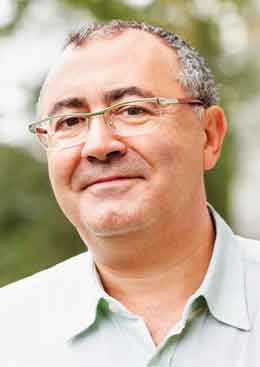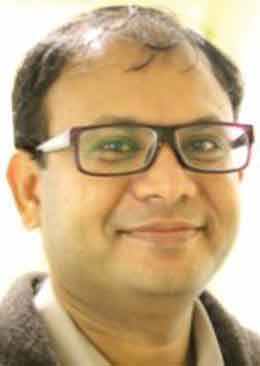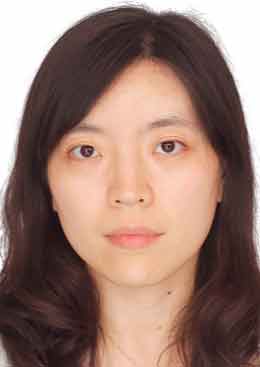ABSTRACT
Antiretroviral therapy (ART) has reshaped the lives of millions of individuals infected with human immunodeficiency virus (HIV). Patients initiating ART early in the course of infection benefit from a considerable reduction in the risks of acquired immune deficiency syndrome (AIDS) and HIV-related inflammatory events. However, the absence of cure and lifelong requirements of treatment highlight the need of a vaccine and an immunotherapeutic strategy. Like for cancer, a paradigm shift has occurred with the contribution of immune activation and microbial translocation priming aberrant systemic immunity in restricting the ability of the host to mount an effective immune response. The approaches of implementing an effective vaccine to prevent infection and inhibition of immune activation with breakage of viral latency followed by vaccination should lead to an HIV-free generation.


 Antiretroviral therapy (ART) has demonstrated its efficacy in reducing both progression to AIDS and inflammation-associated complications (non-AIDS events), while dramatically decreasing secondary viral transmission.[Citation1] Furthermore, early ART initiation can reduce immune activation and size of viral reservoir and provide a post-treatment viral control in few children or adults creating a remission so-called functional cure.[Citation2] Therefore, the development of vaccine and novel immune-based strategies are warranted to scale-up the possibility to remain free of HIV-related events without the need to receive ART.
Antiretroviral therapy (ART) has demonstrated its efficacy in reducing both progression to AIDS and inflammation-associated complications (non-AIDS events), while dramatically decreasing secondary viral transmission.[Citation1] Furthermore, early ART initiation can reduce immune activation and size of viral reservoir and provide a post-treatment viral control in few children or adults creating a remission so-called functional cure.[Citation2] Therefore, the development of vaccine and novel immune-based strategies are warranted to scale-up the possibility to remain free of HIV-related events without the need to receive ART.
The contributions of inflammation and immune exhaustion in cancer and chronic viral infections are rationalizing a targeted therapy to reinvigorate immune control. Herein, we provide an overview of strategies that may overcome the challenges encountered in the development of HIV vaccine and immunotherapy aimed at prevention, treatment and cure.
HIV vaccine research: beyond the hubris nemesis complex
Unlike smallpox and measles, HIV with no exception leads to a chronic infection that cannot be naturally cleared by the host. Due to the absence of spontaneous resolution of HIV infection, limited information on the determinants of host response required for vaccine design can be gleaned. In addition, other hurdles for vaccine development include the unparalleled capacity of HIV in generating mutations in its genome, the inherited ability of the viral envelope (Env) to overcome antibody recognition, and the rapid viral assault on helper CD4 T-cell function.[Citation3] The level of immune activation may explain the reduced vaccine response in HIV patients and aging adults, which highlight the importance of controlling non-specific immune activation.[Citation4] Encouragingly, the evaluation of un-infected individuals exposed to HIV has shed light on the contribution of antibodies, natural killer cells and T-cell responses associated with the protection from HIV acquisition.[Citation5,Citation6]
An effective vaccine should provide protection against the broad genetic diversity of HIV, control CD4 T-cell activation and block both mucosal and parenteral transmission routes. The humoral immune response is one of the first lines of defense against invading pathogens, which plays a crucial role in preventing infection and therefore has been the main focus of vaccine research over the last two decades.[Citation3,Citation7]
After discouraging results from several vaccine trials, a beacon of hope was provided by the RV144 vaccine trial, which specifically identified that IgG for the V1V2 region of Env gp120 was associated with protection from infection.[Citation8] However, the protection was short-lived and temporally linked with the decline in antibodies mediating antibody-dependent cellular cytotoxicity (ADCC). This suggests that combinations of broad antibodies targeting different binding sites on the Env protein could block immune escape. Results from HVTN 505 prime-boost study showed lack of protection against HIV owing to the unexpected induction of non-neutralizing gp41-reactive anti-HIV antibodies.[Citation9] The antibodies elicited by the vaccine were related to polyreactive antibody repertoire response from pre-existing B-cells that were cross-reactive with Escherichia coli. Further understanding of the contribution of microbiome to both vaccine-induced immunity and non-specific immune activation represents a new and unforeseen challenge for the development of an optimal immune response. Newer prime-boost mosaic and conserved sequence immunization strategies (Env trimer) eliciting broader immune responses and newer immunogens inducing broadly neutralizing antibodies are in development and may overcome current vaccine challenges. Another emerging area is vectored immunoprophylaxis substituting immunization, which was shown in mice models to transfer genes of the existing broadly neutralizing antibodies conferring full protection from HIV infection.[Citation10]
Alternatively, one strategy was developed to induce a cellular response in an animal model using live rhesus cytomegalovirus vectors encoding six simian immunodeficiency virus genes. Although the vaccine did not prevent infection, in half of the monkeys, the CD8 T-cell cytotoxic response induced by the vaccine was able to control and eliminate the virus.[Citation11] In light of these data, using conventional adjuvant may not translate into enhanced immune response, as inflammation may be very deleterious in the context of HIV exposition. A novel approach involving control of immune activation combined with optimal “immunometabolic conditioning fitness” for immune cells represents an attractive direction.[Citation12] Collectively, the strategy to enhance the contribution of broadly neutralizing antibody along with CD8 T-cell response in the context of controlled immune activation and optimal metabolic fitness will mark the dawn for HIV vaccine success.
Never the twain shall meet: when treatment and cure immune strategies crosstalk
Convergent evidence indicates that the strategies needed for CD4 T-cell recovery in patients receiving ART are also an integrated part of those aiming at decreasing HIV reservoir size. The existence of elite controllers and the acquired viral control in post-treatment controllers observed in one child and a handful of adults (French VISCONTI cohort) represent models for a functional cure.[Citation13] Based on such patients with exceptionally good outcome, immunotherapy and therapeutic vaccination are the main strategies in addition to ART and include the following: to enhance innate and adaptive immune responses, to control immune activation/exhaustion and to increase the effectiveness of HIV therapeutic vaccination. In addition to these immune strategies, as the HIV DNA reservoir in the latently infected cells remains invisible to the immune system, certain cytokines and anti-latency agents are also needed to activate the virus from a dormant stage.[Citation14] Several strategies have been tested with mixed results. Therapeutic vaccines using dendritic cells (DCs) that recognize the patient’s own virus and skip help of CD4 T-cells offer an attractive approach. We and others reported on the impact of autologous DC immunotherapy with or without ART on the level of immune activation and modifications in B- and T-cell responses.[Citation15,Citation16] This approach was well tolerated and led to HIV-1-specific T-cell immune responses elicited by DC therapeutic vaccines, which has impacted changes in HIV-1 DNA viral reservoir and plasma viral load after ART interruption in only one study.[Citation16] Due to the coexistence of multiple pathways involved in T-cell dysfunction, a combination of approaches is probably required to generate more significant results.
For the first time in HIV-infected patients, Caskey et al. showed that a single infusion of 3BNC117 broadly neutralizing antibody binding CD4 molecules was safe and significantly reduced plasma viral load by 0.8–2.5 log in 28 days.[Citation17] Emergence of resistant viral strains was observed in some patients, highlighting the need for antibody combinations to further control viral replication. More potent neutralizing antibodies generated by molecular engineering methods, harboring a longer half-life, are empowered to both harness ADCC and engage Fc receptors to enhance host immunity.
Only “early ART initiation” represents the consensual approach, as an optimal CD4 T-cell recovery, normalization of immune activation and reduction in HIV reservoir size has been observed. Importantly, some of these very early treated patients who elected to discontinue ART did not harbor viral rebound for several years and presented with reduced reservoir size and low immune activation when compared to elite controllers. Therefore, early treated patients particularly before six months of infection are the best candidates to test combined immunotherapy, and present reduced risks of undergoing ART discontinuation as the ultimate readout for effective viral control.[Citation18]
Globally, all these strategies have to deal with the damage induced by the immune activation driven directly by HIV itself and by microbial translocation that leads to myeloid immune activation even after years of ART. The gut mucosal damage induced by the virus occurs within days following infection likely through the homing receptor α4β7 linked to CCR5 and contributes dramatically to the destruction of the gut mucosal CD4 T-cells. In addition to systemic immune activation and exhaustion, intestinal microbiota has emerged as a factor responsible for the priming of aberrant systemic immunity via bacterial immune mimicry in cancer and recently in HIV infection.[Citation9,Citation19]
Therapies targeted toward gut mucosal healing are needed and include pro/prebiotics, cytokine or anti-cytokine therapy, TLR modulation and mucosal tissue repair.[Citation20] We tested the efficacy of recombinant interleukin 7 (IL-7) on T-cell reconstitution in blood and gut mucosa in patients on ART with incomplete CD4 T-cell recovery.[Citation21] IL-7 administration led to increases of CD4 T-cells in blood and an expansion of T-cells expressing the gut homing integrin α4β7 as well as a partial recovery of the gut mucosal integrity.[Citation13] Furthermore, IL-15 and IL-21, two other gamma-chain cytokines that converge on the STAT5 signaling pathway have been considered as modulators of a vaccine therapy and regulators of viral reservoir reactivation.[Citation22]
Conclusion
The success of vaccination and immunotherapy will depend on the causative factors linked with immune activation of both lymphoid and myeloid cells embedding innate and acquired immune functions. Several challenges need to be addressed including the induction of broadly neutralizing antibodies while avoiding potential self-recognition, and the safe elimination of latent HIV reservoir. Strategies that include modulation of immune activation prior to vaccine may elicit effective immune responses with persistent memory involving broadly neutralizing antibodies paired with vigorous CD8 T-cell cytotoxic response. Collaborative efforts between industry and academia involving scientists, clinicians, virologists and community representatives will be required to generate vaccine and immunotherapy leading to an HIV-free generation.
Wei Cao
Research Institute of the McGill University Health Centre: Glen site, Montréal, QC, Canada and Department of Infectious Diseases, Peking Union Medical, College Hospital, Beijing, China
Vikram Mehraj
Research Institute of the McGill University Health Centre: Glen site, Montréal, QC, Canada
Jean-Pierre Routy
Division of Hematology and Chronic Viral Illness Service, McGill University Health Centre, Montréal, QC, Canada and Research Institute of the McGill University Health Centre: Glen site, Montréal, QC, Canada
CONTACT Jean-Pierre Routy [email protected] Division of Hematology and Chronic Viral Illness Service, McGill University Health Centre, Montréal, QC, Canada
Financial & competing interests disclosure
This work was supported by the Fonds de Recherche du Québec - Santé (FRQ-S): Therapie cellulaire and Reseau SIDA/Maladies infectieuses, Canadian Institutes of Health Research (grants MOP 103230 and CTN 257), the Canadian Foundation for AIDS Research (CANFAR; grant 023-512), and the Canadian HIV Cure Enterprise Team Grant HIG-133050 from the CIHR in partnership with CANFAR. JP Routy is the holder of Louis Lowenstein Chair in Hematology & Oncology, McGill University. JP Routy received consulting fees and honoraria from ViiV, GSK, Merck Frosst, Abbvie, and BMS. V Mehraj is supported by a FRQ-S postdoctoral fellowship award. W Cao is supported by a CIHR/CTN International postdoctoral fellowship award. The authors have no other relevant affiliations or financial involvement with any organization or entity with a financial interest in or financial conflict with the subject matter or materials discussed in the manuscript apart from those disclosed.
Acknowledgement
The authors would like to thank Angie Massicotte, Research Institute of McGill University Centre, for her coordination and assistance with the manuscript.
References
- Maartens G, Celum C, Lewin SR. HIV infection: epidemiology, pathogenesis, treatment, and prevention. Lancet. 2014;384(9939):258–271. DOI:10.1016/S0140-6736(14)60164-1.
- Rajasuriar R, Wright E, Lewin SR. Impact of antiretroviral therapy (ART) timing on chronic immune activation/inflammation and end-organ damage. Curr Opin HIV AIDS. 2015;10(1):35–42. DOI:10.1097/COH.0000000000000118.
- Burton DR, Mascola JR. Antibody responses to envelope glycoproteins in HIV-1 infection. Nat Immunol. 2015;16(6):571–576. DOI:10.1038/ni.3158.
- Alter G, Sekaly RP. Beyond adjuvants: antagonizing inflammation to enhance vaccine immunity. Vaccine. 2015;33(Suppl 2):B55–9. DOI:10.1016/j.vaccine.2015.03.058.
- Burgener A, Sainsbury J, Plummer FA, et al. Systems biology-based approaches to understand HIV-exposed uninfected women. Curr HIV/AIDS Rep. 2010;7(2):53–59. DOI:10.1007/s11904-010-0039-3.
- Parsons MS, Boulet S, Song R, et al. Mind the gap: lack of association between KIR3DL1*004/HLA-Bw4-induced natural killer cell function and protection from HIV infection. J Infect Dis. 2010;202(Suppl 3):S356–60. DOI:10.1086/655966.
- Jardine J, Julien JP, Menis S, et al. Rational HIV immunogen design to target specific germline B cell receptors. Science. 2013;340(6133):711–716. DOI:10.1126/science.1234150.
- Rerks-Ngarm S, Pitisuttithum P, Nitayaphan S, et al. Vaccination with ALVAC and AIDSVAX to prevent HIV-1 infection in Thailand. N Engl J Med. 2009;361(23):2209–2220. DOI:10.1056/NEJMoa0908492.
- Williams WB, Liao HX, Moody MA, et al. Diversion of HIV-1 vaccine-induced immunity by gp41-microbiota cross-reactive antibodies. Science. 2015. DOI:10.1126/science.aab1253.
- Balazs AB, Chen J, Hong CM, et al. Antibody-based protection against HIV infection by vectored immunoprophylaxis. Nature. 2012;481(7379):81–84. DOI:10.1038/nature10660.
- Hansen SG, Piatak M Jr., Ventura AB, et al. Immune clearance of highly pathogenic SIV infection. Nature. 2013;502(7469):100–104. DOI:10.1038/nature12519.
- Dagenais-Lussier X, Mouna A, Routy JP, et al. Current topics in HIV-1 pathogenesis: the emergence of deregulated immuno-metabolism in HIV-infected subjects. Cytokine Growth Factor Rev. 2015. DOI:10.1016/j.cytogfr.2015.09.001.
- Saez-Cirion A, Bacchus C, Hocqueloux L, et al. Post-treatment HIV-1 controllers with a long-term virological remission after the interruption of early initiated antiretroviral therapy ANRS VISCONTI study. PLoS Pathog. 2013;9(3):e1003211. DOI:10.1371/journal.ppat.1003211.
- Archin NM, Liberty AL, Kashuba AD, et al. Administration of vorinostat disrupts HIV-1 latency in patients on antiretroviral therapy. Nature. 2012;487(7408):482–485. DOI:10.1038/nature11286.
- Garcia F, Routy JP. Challenges in dendritic cells-based therapeutic vaccination in HIV-1 infection workshop in dendritic cell-based vaccine clinical trials in HIV-1. Vaccine. 2011;29(38):6454–6463. DOI:10.1016/j.vaccine.2011.07.043.
- Andres C, Plana M, Guardo AC, et al. HIV-1 reservoir dynamics after vaccination and antiretroviral therapy interruption are associated with dendritic cell-vaccine induced T-cell responses. J Virol. 2015. DOI:10.1128/JVI.01062-15.
- Caskey M, Klein F, Lorenzi JC, et al. Viraemia suppressed in HIV-1-infected humans by broadly neutralizing antibody 3BNC117. Nature. 2015;522(7557):487–491. DOI:10.1038/nature14411.
- Cao W, Mehraj V, Vyboh K, et al. Antiretroviral therapy in primary HIV-1 infection: influences on immune activation and gut mucosal barrier dysfunction. AIDS Rev. 2015;17(3):135–146.
- Zitvogel L, Galluzzi L, Kepp O, et al. Type I interferons in anticancer immunity. Nat Rev Immunol. 2015;15(7):405–414. DOI:10.1038/nri3845.
- International ASSWGoHIVC, Deeks SG, Autran B, et al. Towards an HIV cure: a global scientific strategy. Nat Rev Immunol. 2012;12(8):607–614. DOI:10.1038/nri3262.
- Sereti I, Estes JD, Thompson WL, et al. Decreases in colonic and systemic inflammation in chronic HIV infection after IL-7 administration. PLoS Pathog. 2014;10(1):e1003890. DOI:10.1371/journal.ppat.1003890.
- Ortiz AM, Klase ZA, DiNapoli SR, et al IL-21 and probiotic therapy improve Th17 frequencies, microbial translocation, and microbiome in ARV-treated, SIV-infected macaques. Mucosal Immunol. 2015. DOI:10.1038/mi.2015.75.
